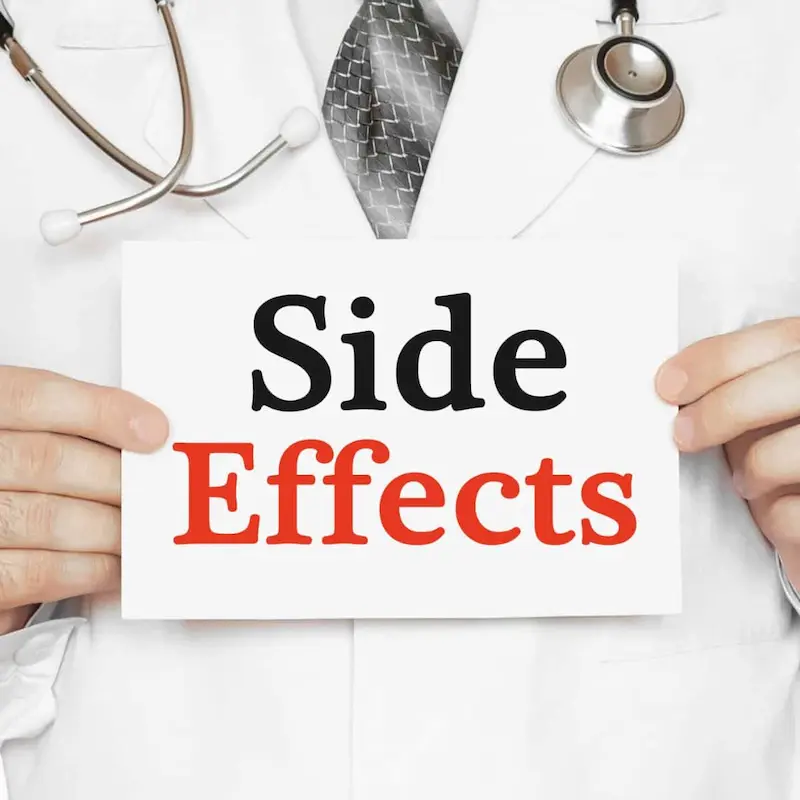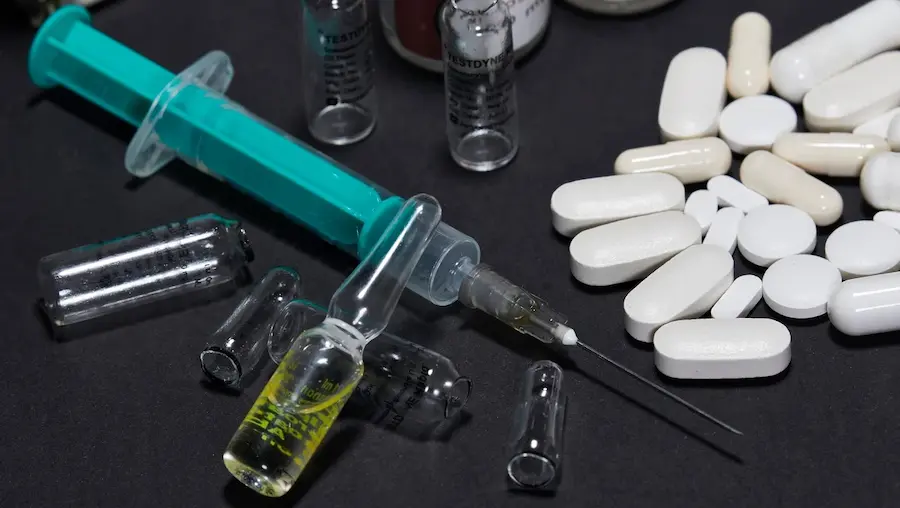Anabolic steroids, synthetic substances related to the male sex hormones, have found a place in the realm of oncology to primarily address cancer-related cachexia, a syndrome of severe weight loss and muscle wasting. These steroids mimic testosterone’s ability to increase protein synthesis in cells, leading to increased muscle mass and strength. This property is particularly beneficial for cancer patients who struggle with the profound physical depletion associated with their disease or the side effects of cancer treatments like chemotherapy.
While the potential benefits are significant, the administration of anabolic steroids in cancer treatment must be approached with caution. The proper dosage and monitoring are critical to minimize the risk of adverse effects. These steroids are prescribed by healthcare professionals in specific situations and are subject to rigorous guidelines to ensure patient safety. The therapeutic use of anabolic steroids is distinct from their misuse in sports and bodybuilding, where the emphasis is on enhancing performance rather than treating illness.
Quick Summary
- Anabolic steroids can be used in oncology to combat weight loss and muscle wasting.
- The therapeutic application requires careful dosing and monitoring to avoid side effects.
- Anabolic steroids in cancer care are regulated to ensure safe and beneficial use in patients.
Role of Anabolic Steroids in Cancer Care

Anabolic steroids in cancer care are utilized to improve quality of life by enhancing appetite, stimulating weight gain, and countering muscle wasting as well as managing anemia associated with cancer treatments.
Enhancing Appetite and Reducing Muscle Wasting
Anabolic steroids play a pivotal role in stimulating appetite, a common issue among cancer patients that leads to weight loss and muscle wasting. Treatment involving these steroids aims to reverse the catabolic state of the muscles caused by cancer and its treatments, thereby promoting protein synthesis and metabolic activity. It is critical in reducing inflammation and augmenting lean body mass, effectively combating muscle wasting seen in cancer cachexia.
Managing Anemia in Cancer Patients
In addressing anemia, a frequent complication in cancer care, anabolic steroids serve as a therapeutic agent by enhancing the production of erythropoietin. This stimulation proves vital in increasing the red blood cell count and improving the anemia of chronic disease. Treatment regimens often include these steroids to assist in restoring healthier levels of hemoglobin and boosting the patient’s overall energy levels.
References
Pharmacology of Anabolic Steroids

Anabolic steroids are synthetic derivatives of testosterone that modulate cellular functions and present significant effects on protein metabolism.
Mechanism of Action
Anabolic steroids exert their effects through the androgen receptor (AR), which is a type of nuclear receptor. When these steroids bind to the AR, they activate specific genes that regulate protein synthesis and support muscle growth and strength enhancements. Testosterone and its more potent metabolite, dihydrotestosterone (DHT), typically mediate the anabolic effects in muscle tissue. In conditions like cancer cachexia, anabolic steroids are thought to combat muscle wasting and help improve patient outcomes.
Steroid Biosynthesis and Metabolic Pathways
Steroids are synthesized from cholesterol primarily in the adrenal glands and gonads. The biosynthesis involves multiple enzymes that catalyze the conversion of cholesterol to pregnenolone and subsequent steroid hormones. Testosterone is mainly produced in the testes under the regulation of the pituitary gland, with lesser amounts secreted by the adrenal glands. In the bloodstream, it largely binds to sex hormone-binding globulin (SHBG) and albumin; only a small fraction of free testosterone is bioavailable. Testosterone can be further metabolized to DHT by 5-alpha-reductase and estradiol by aromatase. The balance and pathway interconnections between anabolic steroids and other hormones play a crucial role in homeostasis and therapy response.
References
Administration and Dosage

The administration and dosage of anabolic steroids in cancer treatment are precisely calibrated to manage symptoms and to avoid systemic toxicity. The route of administration and the dosage are determined by the specific needs of the patient and the type of cancer being treated.
Oral and Injectable Forms
Anabolic steroids are available in oral and injectable forms. Oral steroids, such as prednisone, are commonly prescribed in tablet form and are taken by mouth. These pass through the digestive system and are absorbed into the bloodstream.
- Oral Tablets:
- Prednisone: Tablets typically available in dosages ranging from 1 mg to 50 mg.
- Administration: Swallowed with water, with or without food as prescribed.
Injectable steroids are administered directly into the bloodstream or muscle, delivering the medication more quickly and directly to the target tissues.
- Injectable Steroids:
- Routes of Administration:
- Intravenous (IV): Directly into a vein
- Intramuscular (IM): Into the muscle tissue
- Injection Preparation: In liquid form, prepared in vials or ampoules
- Routes of Administration:
Determining Effective Doses
The determination of effective doses of anabolic steroids in cancer treatment is a critical component of therapy. Physicians consider several factors, including the patient’s weight, the type and stage of cancer, and any comorbid conditions, like hypertension that may be affected by increased blood pressure.
- Dosing Factors:
- Patient Weight: Heavier individuals may require higher doses.
- Cancer Type: Certain cancers may respond better to different dosages or forms of steroids.
- Patient Health: Pre-existing conditions like high blood pressure may limit dosage.
The goal is to find the minimal effective dose that yields therapeutic benefits with the fewest side effects. This process often involves close monitoring and regular adjustment of the dose.
- Monitoring:
- Blood Pressure: Regular checks to monitor the effects on cardiovascular health.
- Skin Reactions: Observation for any adverse reactions at injection sites or changes to the skin.
Adverse Effects and Management

In the context of cancer treatment, anabolic steroids can lead to a spectrum of side effects that require vigilant monitoring and proactive management strategies.
Immediate and Long-term Side Effects
Anabolic steroids, when introduced into cancer therapy, have been associated with a range of side effects that can manifest shortly after administration or develop over the course of long-term treatment. Key side effects include:
- Mood Changes & Psychological Effects:
- Anxiety
- Mood swings
- Depression
- Cardiovascular & Metabolic Concerns:
- High blood pressure (hypertension)
- Heartburn
- Musculoskeletal:
- Muscle weakness
- Hormonal & Weight Changes:
- Weight gain due to alterations in salt and water retention
- Immune System Impact:
- Increased risk of infection
Pain management also becomes crucial, as patients may experience discomfort arising from these side effects.
Monitoring and Controlling Complications
Strategies to manage these side effects involve rigorous monitoring and tailored interventions. Some approaches include:
- Regular Assessment:
- Monitoring mood and psychological state to manage depression, anxiety, and other mood disorders.
- Evaluating blood pressure and cardiovascular health routinely.
- Dietary and Lifestyle Adjustments:
- Implementing low-sodium diets to combat weight gain and high blood pressure.
- Encouraging activities to strengthen muscles, if applicable.
- Medical Interventions:
- Utilizing medications to control blood pressure and heartburn.
- Administering treatments to bolster the immune system.
By closely observing patients and promptly addressing emerging side effects, healthcare providers can minimize the impact of these adverse reactions on the patient’s quality of life.
Comparative Analysis: Anabolic Steroids Versus Corticosteroids

This section provides an analytical comparison between anabolic steroids and corticosteroids, focusing on their structural and functional differences and specific applications in cancer treatment.
Structural and Functional Differences
Anabolic steroids and corticosteroids are distinct in their structure and functions. Anabolic steroids are synthetic versions of the male sex hormone testosterone. These compounds are designed to mimic testosterone’s ability to build muscle by promoting protein synthesis within cells.
Corticosteroids, including hydrocortisone, prednisolone, dexamethasone, and methylprednisolone, are a class of steroids that closely resemble cortisol, a hormone naturally produced by the adrenal glands. Rather than promoting tissue building, corticosteroids are adept at suppressing inflammation, an immune response that can incur tissue damage.
| Feature | Anabolic Steroids | Corticosteroids |
|---|---|---|
| Primary Function | Muscle growth | Inflammation reduction |
| Hormone Resemblance | Testosterone | Cortisol |
| Medical Use | Limited to specific cases | Broadly prescribed for inflammation |
Cancer-Specific Applications
In the context of cancer treatment, the applications of anabolic steroids and corticosteroids diverge greatly. Anabolic steroids might be used in specific cancer cases to combat muscle wasting and restore tissue strength and mass, a condition known as cachexia. In contrast, corticosteroids are employed to reduce inflammation and manage symptoms such as swelling, pain, and allergic reactions associated with both the disease itself and its treatment.
- Anabolic steroids: Utilized in cachexia to improve patient’s strength and muscle mass.
- Corticosteroids: Commonly used to control cancer symptoms and side effects of treatments.
Frequently Asked Questions

Anabolic steroids play a crucial role in supporting patients during specific cancer therapies by promoting weight gain and muscle strength, which are often compromised during treatment.
How do anabolic steroids support patients during cancer therapy?
Anabolic steroids aid in counteracting the muscle wasting and weight loss that patients often experience during cancer treatment. They function by stimulating appetite and promoting muscle mass and strength.
What are the potential benefits of steroid use for individuals with cancer?
Individuals with cancer may experience improved physical functioning and enhanced well-being from the use of anabolic steroids. These benefits are particularly significant in combating the catabolic stress of chemotherapy and radiation therapy.
In which types of cancer treatments are anabolic steroids most commonly prescribed?
Anabolic steroids are commonly prescribed in treatments for cancers that have a wasting effect on the body, such as lung cancer or head and neck cancers, where they help patients maintain body weight and muscle mass.
What role do anabolic steroids play in palliative care for cancer patients?
In palliative care, anabolic steroids are utilized to improve the quality of life by alleviating symptoms like fatigue, weakness, and weight loss associated with advanced cancer.
Can anabolic steroids improve the quality of life for cancer patients?
Yes, they can potentially improve the quality of life by increasing energy levels, physical strength, and helping patients to maintain an active lifestyle during and after cancer treatment.
What are the guidelines for administering anabolic steroids in oncology?
The guidelines include careful screening of patients for potential contraindications, monitoring for side effects, and individualized dosing based on the specific needs and health status of the patient.
Dr. Grant Fourie, a specialist in male hormones, is based in Cape Town, South Africa. He provides comprehensive treatments for conditions related to low testosterone, such as erectile dysfunction, fatigue, and mood changes. His methods include hormone replacement therapy and other modern treatment options.
Contact me via email or phone to book personal appointment in my clinic: The Village Square, Cape Town - South Africa



